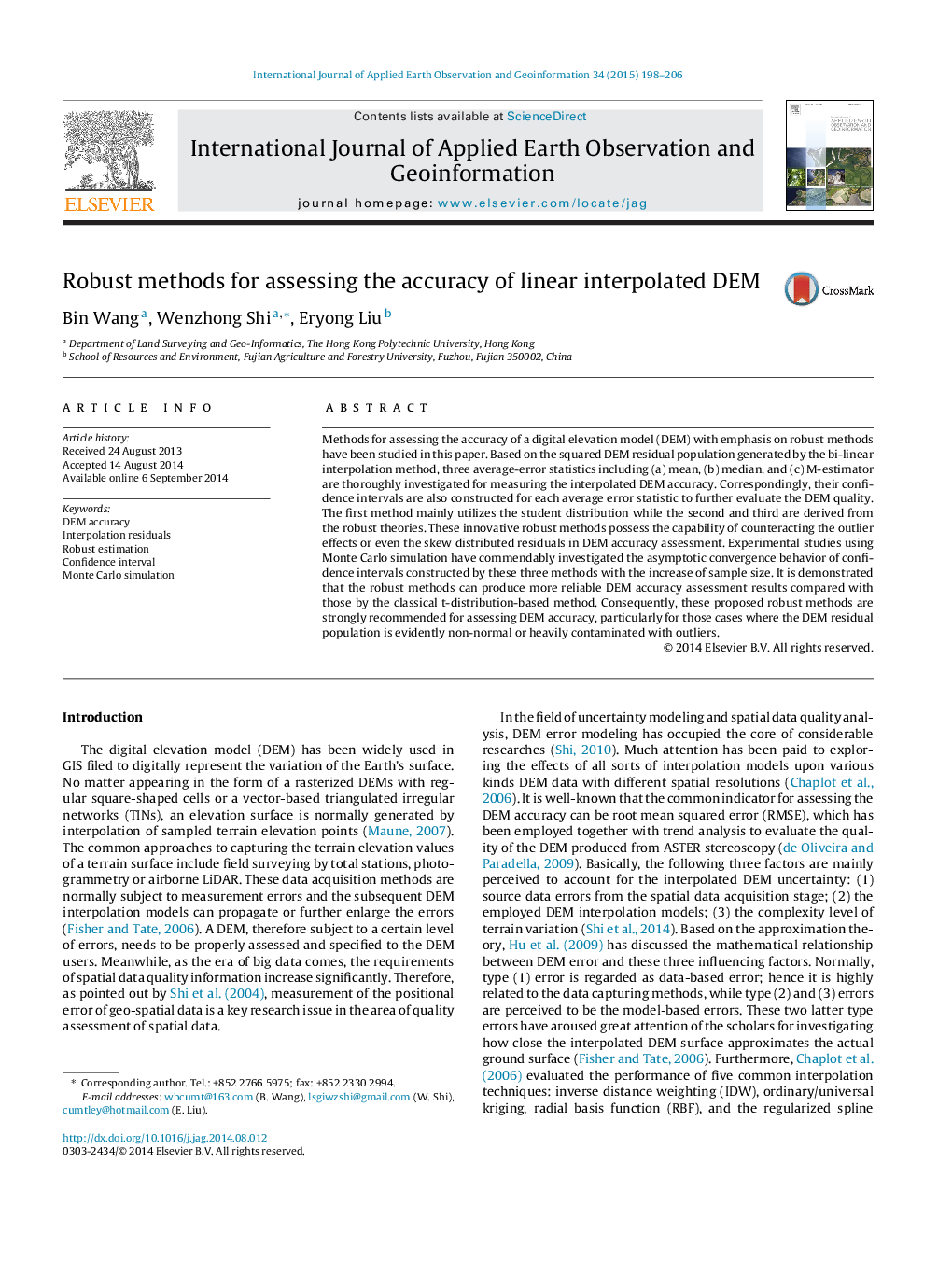| Article ID | Journal | Published Year | Pages | File Type |
|---|---|---|---|---|
| 6348749 | International Journal of Applied Earth Observation and Geoinformation | 2015 | 9 Pages |
â¢Two robust statistics are proposed for assessing the interpolated DEM accuracy.â¢Confidence intervals are constructed to restrict the interpolated DEM residuals.â¢Asymptotic convergence behaviors are investigated by Monte Carlo simulations.â¢Robust methods produce more reliable DEM accuracy assessments than classical methods.
Methods for assessing the accuracy of a digital elevation model (DEM) with emphasis on robust methods have been studied in this paper. Based on the squared DEM residual population generated by the bi-linear interpolation method, three average-error statistics including (a) mean, (b) median, and (c) M-estimator are thoroughly investigated for measuring the interpolated DEM accuracy. Correspondingly, their confidence intervals are also constructed for each average error statistic to further evaluate the DEM quality. The first method mainly utilizes the student distribution while the second and third are derived from the robust theories. These innovative robust methods possess the capability of counteracting the outlier effects or even the skew distributed residuals in DEM accuracy assessment. Experimental studies using Monte Carlo simulation have commendably investigated the asymptotic convergence behavior of confidence intervals constructed by these three methods with the increase of sample size. It is demonstrated that the robust methods can produce more reliable DEM accuracy assessment results compared with those by the classical t-distribution-based method. Consequently, these proposed robust methods are strongly recommended for assessing DEM accuracy, particularly for those cases where the DEM residual population is evidently non-normal or heavily contaminated with outliers.
